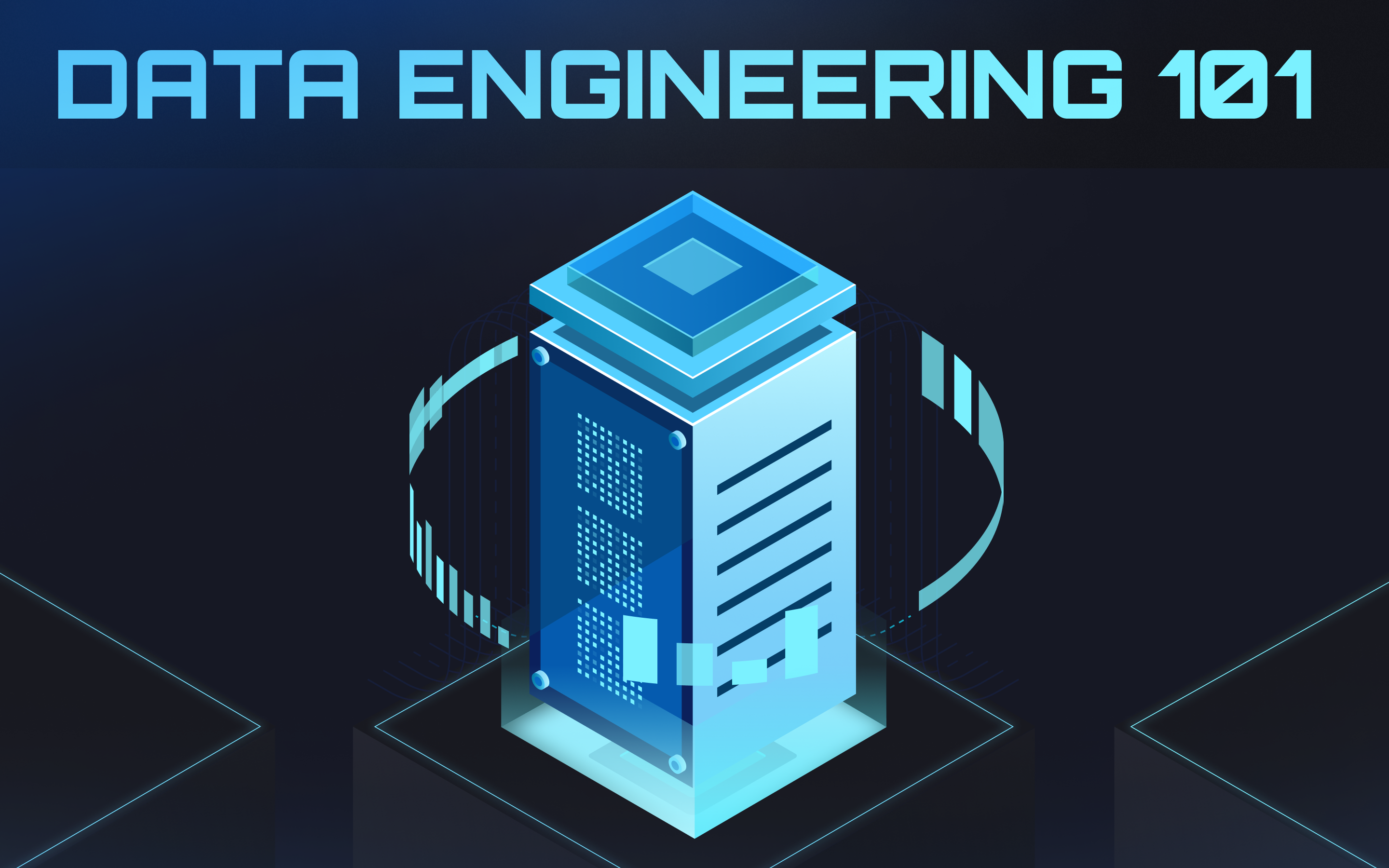In 2024, the landscape of Data Streaming Technologies is poised for groundbreaking advancements. The significance of real-time data processing has never been more crucial as businesses strive to make informed decisions based on up-to-the-minute information. The top five technologies leading this revolution include Apache Kafka, Apache Flink, Google Cloud Dataflow, Amazon Kinesis Data, and Azure Stream Analytics. These technologies are at the forefront of reshaping how industries harness data in real-time to drive innovation and efficiency.
Apache Kafka
Apache Kafka, an open-source distributed streaming platform, stands as a cornerstone in the realm of Data Streaming Technologies. Its fault-tolerant architecture ensures high resilience even in the face of failures, making it a reliable choice for real-time data processing. With a distributed cluster of servers replicating data across multiple nodes, Apache Kafka guarantees flawless recovery and prevention of data loss.
Overview
Introduction to Apache Kafka
Apache Kafka has revolutionized the way we process streaming data by handling vast amounts of data streams with minimal latency. It can ingest data from multiple sources and integrate seamlessly with popular stream processingframeworks like Apache Flink, Apache Storm, and Apache Samza.
Key features and capabilities
- Scalability: Apache Kafka can add more nodes to the cluster for horizontal scaling.
- Fault Tolerance: Its fault-tolerant design ensures data integrity and reliability.
- Real-time Data Processing: Enables processing streams of records in real time efficiently.
Advantages
Scalability and reliability
The scalability of Apache Kafka allows businesses to expand their systems seamlessly without compromising performance. Its reliability ensures that critical data is processed without interruptions or delays.
Use cases in various industries
- Finance: Real-time transaction processing for banks and financial institutions.
- E-commerce: Inventory management and order tracking in online retail.
- Healthcare: Monitoring patient vitals and medical device data in hospitals.
Impact on Data Streaming Technologies
Market adoption and popularity
Apache Kafka has gained widespread acceptance due to its robust features and seamless integration capabilities. It is widely used across industries for its efficiency in handling high-throughput, fault-tolerant, and scalable stream processing tasks.
Future developments and enhancements
The future of Apache Kafka looks promising with ongoing advancements focusing on enhancing its performance, security, and integration capabilities. As businesses continue to prioritize real-time data processing, Apache Kafka is expected to play a pivotal role in shaping the landscape of Data Streaming Technologies.
Apache Flink
Apache Flink, a powerful stream processing framework, is making waves in the realm of Data Streaming Technologies. Its ability to handle real-time data processing with high throughput and low latency has positioned it as a top choice for businesses seeking efficient solutions. Let's delve into how Apache Flink's unique features and capabilities are shaping the landscape of data streaming technologies in 2024.
Overview
Introduction to Apache Flink
Apache Flink stands out for its robust stream processing capabilities, enabling businesses to analyze and act on data streams in real time. Unlike traditional batch processing systems, Apache Flink processes data as it arrives, allowing for immediate insights and actions based on the most recent information.
Key features and capabilities
- Stream Processing: Apache Flink excels at processing continuous streams of data, making it ideal for applications requiring real-time analytics.
- Event Time Processing: It supports event time semantics, ensuring accurate results even when events arrive out of order.
- State Management: Apache Flink provides built-in mechanisms for managing stateful computations efficiently.
Advantages
Real-time data processing
By offering true real-time data processing capabilities, Apache Flink empowers businesses to make instant decisions based on up-to-date information. This agility is crucial in dynamic environments where timely actions can lead to significant competitive advantages.
Use cases in various industries
- Social Media: Tailoring content recommendations based on real-time user interactions to enhance engagement.
- Finance: Detecting fraudulent activities in transactions through continuous monitoring of financial data streams.
- E-commerce: Optimizing inventory management by analyzing sales trends and stock levels in real time.
Impact on Data Streaming Technologies
Market adoption and popularity
The integration of Apache Flink into various industries has been met with enthusiasm due to its unparalleled performance in handling complex stream processing tasks. Companies leveraging Apache Flink have witnessed substantial improvements in operational efficiency and decision-making processes.
Future developments and enhancements
As the demand for real-time analytics continues to grow, Apache Flink is poised to undergo further advancements to meet evolving industry needs. Enhancements focusing on scalability, fault tolerance, and integration with other technologies will solidify its position as a frontrunner in the world of Data Streaming Technologies.
Google Cloud Dataflow
Google Cloud Dataflow, a cutting-edge data processing service by Google, stands out as a pivotal player in the realm of Data Streaming Technologies for 2024. With its distributed processing capabilities, Dataflow efficiently handles vast amounts of streaming data, ensuring lightning-fast processing speeds and seamless scalability. Let's explore how Google Cloud Dataflow's unique features and capabilities are reshaping the landscape of real-time data processing.
Overview
Introduction to Google Cloud Dataflow
Google Cloud Dataflow simplifies the complexities of processing data in real time by automatically parallelizing tasks for optimal resource utilization. This cloud-native solution offers a fully managed service that integrates seamlessly with other Google Cloud services, providing organizations with a streamlined approach to stream processing applications.
Key features and capabilities
- Automatic Task Parallelization: Efficiently distributes tasks for lightning-fast data processing.
- Seamless Integration: Integrates with various Google Cloud services like Pub/Sub for streamlined data ingestion.
- Custom Pricing Plans: Offers flexible pricing based on a pay-as-you-go model, ensuring cost-effective solutions for businesses.
Advantages
Integration with Google Cloud services
The seamless integration of Google Cloud Dataflow with other Google Cloud services enhances its appeal to organizations seeking comprehensive solutions. By leveraging the power of integrated services, businesses can streamline their workflows and achieve greater efficiency in real-time data processing.
Use cases in various industries
- Retail Sector: Revolutionizing operations through real-time inventory management and customer insights generation.
- Healthcare Industry: Enabling instant analysis of patient data streams for improved healthcare outcomes.
- Financial Services: Facilitating real-time fraud detection and transaction monitoring for enhanced security measures.
Impact on Data Streaming Technologies
Market adoption and popularity
Google Cloud Dataflow has witnessed widespread adoption across industries due to its robust performance and seamless scalability. Organizations leveraging this technology have experienced significant improvements in operational efficiency and decision-making processes, driving its popularity in the market.
Future developments and enhancements
As the demand for real-time analytics continues to soar, Google is expected to enhance Dataflow further to meet evolving industry needs. Future developments may focus on enhancing scalability, improving fault tolerance mechanisms, and expanding integration capabilities with emerging technologies.
Amazon Kinesis Data
Amazon Kinesis Data, a robust and scalable data streaming technology, is redefining the landscape of real-time data processing in 2024. With its streamlined approach to handling data streams, Amazon Kinesis Data Streams empowers organizations to ingest and process large volumes of real-time data with ease, providing valuable insights for timely decisions and swift responses to market dynamics.
Overview
Introduction to Amazon Kinesis Data
Amazon Kinesis Data Streams offers a premium service for real-time processing of big data, enabling customized applications for processing and analyzing streaming data. By facilitating the real-time processing of streaming big data, it provides flexible throughput options and caters to various use cases across industries.
Key features and capabilities
- Ingestion and Processing: Enables organizations to seamlessly ingest and process vast amounts of real-time data streams.
- Flexible Throughput Options: Provides customizable throughput settings to adapt to different processing requirements.
- Diverse Use Cases: Supports a wide range of applications such as financial services, digital advertising technology companies, and businesses requiring immediate data processing.
Advantages
Scalability and ease of use
Amazon Kinesis Data Streams has demonstrated exceptional scalability by ingesting 250 TB of data in near real time. It evaluates around 20 trillion feature flags daily while maintaining 99.999 percent availability for customers. This showcases the platform's ability to handle massive workloads effortlessly.
Use cases in various industries
- Financial Services Leaders: Utilize Amazon Kinesis for real-time fraud detection and transaction monitoring.
- Digital Advertising Technology Companies: Leverage the platform for personalized ad targeting based on real-time analytics.
- Real-Time Data Processing Companies: Benefit from immediate insights into operational metrics for enhanced decision-making.
Impact on Data Streaming Technologies
Market adoption and popularity
Amazon Kinesis Data Streams has gained significant traction across industries due to its robustness and scalability in handling large-scale streaming data. Organizations recognize its value in driving operational efficiency, enhancing customer experiences, and enabling agile decision-making processes.
Future developments and enhancements
As the demand for real-time analytics continues to soar, Amazon is expected to further enhance Amazon Kinesis Data Streams with advanced features. These developments may focus on improving scalability even further, enhancing ease of use through intuitive interfaces, and expanding integration capabilities with emerging technologies.
Azure Stream Analytics
Azure Stream Analytics, a fully managed stream processing engine by Microsoft, is revolutionizing the landscape of Data Streaming Technologies in 2024. This cutting-edge technology is designed to analyze and process large volumes of streaming data with sub-millisecond latencies, enabling organizations to derive valuable insights from various input sources such as applications, devices, sensors, clickstreams, and social media feeds. Let's delve into the unique features and capabilities that make Azure Stream Analytics a powerhouse in real-time data processing.
Overview
Introduction to Azure Stream Analytics
Azure Stream Analytics offers a scalable event-processing engine that ingests, processes, and analyzes streaming data from diverse sources with remarkable speed and efficiency. Whether it's log monitoring, clickstream analysis, IoT telemetry, or any other data stream processing requirement, Azure Stream Analytics stands tall as one of the best-in-class solutions available today. Its seamless integration with IoT devices empowers organizations to gain real-time insights for critical decision-making processes.
Key features and capabilities
- Scalability: Azure Stream Analytics provides a fully managed solution for processing streaming data at scale.
- Efficiency: With its SQL-like query language, organizations can define complex data processing logic effortlessly.
- Connectivity: From cloud platforms like Azure Blob Storage to on-premises systems like SQL Server, Azure Stream Analytics offers comprehensive connectivity options for seamless data integration.
Advantages
Integration with Microsoft Azure services
Azure Stream Analytics seamlessly integrates with various Microsoft Azure services, offering organizations a holistic approach to stream processing applications. By leveraging the power of Azure's cloud infrastructure, businesses can optimize their operations and drive efficiency through real-time data analytics.
Use cases in various industries
- Manufacturing: Real-time monitoring of production processes for enhanced quality control.
- Transportation: Optimizing logistics operations through immediate insights into supply chain activities.
- Healthcare: Monitoring patient health metrics in real time for proactive medical interventions.
Impact on Data Streaming Technologies
Market adoption and popularity
The market adoption of Azure Stream Analytics has been on the rise across industries due to its robust performance and reliability in handling streaming data. Organizations recognize the value of this technology in driving operational excellence and gaining competitive advantages through real-time analytics.
Future developments and enhancements
As the demand for real-time analytics continues to grow exponentially, Microsoft is expected to enhance Azure Stream Analytics further to meet evolving industry needs. Future developments may focus on improving scalability even further, enhancing ease of use through intuitive interfaces, and expanding integration capabilities with emerging technologies.
Real-time data processing technologies are pivotal in transforming industries through swift insights and agile decision-making. Embracing data streaming tools like Apache Kafka and Apache Flink is essential for businesses to stay competitive in the dynamic information age. By leveraging these technologies, organizations gain a deep understanding of their environments, enabling them to respond swiftly to critical events and changing trends. As cloud-based stream processing solutions continue to advance, stream processing frameworks become indispensable for deriving actionable insights and building scalable real-time applications, shaping the future of data processing in 2024.
###






